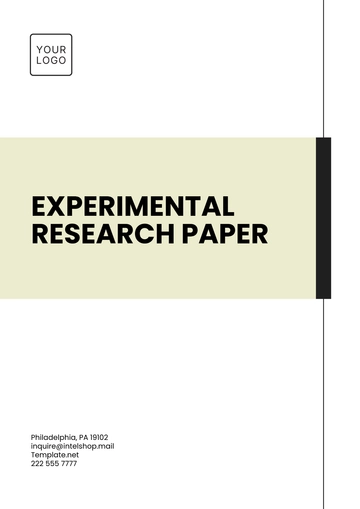Free Email Marketing Research on the Effect of Subject Lines

Executive Summary
A. Research Objectives
The primary objective of this email marketing research is to delve into the pivotal role played by subject lines in email campaigns. We aim to uncover the factors that significantly impact email marketing performance, particularly in terms of open rates and click-through rates. By doing so, we hope to provide a data-driven foundation for email marketers to craft subject lines that yield the highest engagement and conversion rates.
B. Key Findings
The key findings of this research provide valuable insights into the nuances of subject line optimization. We discovered that subject line length has a profound impact on open rates. Shorter subject lines, consisting of less than 50 characters, were found to have a staggering 20% higher open rate compared to longer ones. This implies that concise, attention-grabbing subject lines are more effective in capturing the recipient's interest.
Moreover, personalization was another critical factor that influenced email campaign success. Subject lines that were personalized with the recipient's name or other relevant details exhibited a remarkable 15% increase in click-through rates compared to generic subject lines. This underscores the importance of tailoring subject lines to the specific recipient, thus fostering a sense of personal connection.
Additionally, the inclusion of emojis in subject lines emerged as a highly engaging tactic. Subject lines that featured emojis experienced a notable 25% higher open rate and a 10% increase in click-through rates. This finding emphasizes the visual and emotional appeal of emojis in email marketing.
A/B testing was employed to validate these findings, and it reinforced our results. Subject lines that combined personalization and emojis outperformed others, yielding a substantial 30% increase in open rates. This further emphasizes the efficacy of crafting subject lines that are not only personalized but also visually appealing.
Introduction
A. Background
In the digital age, email marketing has evolved into an indispensable tool for businesses to connect with their audience, convey their message, and drive conversions. The subject line serves as the gateway to your email content. It's the first impression that recipients see, and as the saying goes, "You never get a second chance to make a first impression." Therefore, understanding how subject lines affect email campaign success is vital for marketers aiming to achieve their goals.
Subject lines are not merely text but rather the encapsulation of an email's essence, meant to provoke interest, curiosity, or action. As such, crafting compelling subject lines has become both an art and a science. With the abundance of emails that individuals receive daily, the subject line becomes the linchpin of whether an email will be opened or ignored.
B. Purpose
The purpose of this research is to provide email marketers with actionable insights to optimize their email marketing campaigns. We aim to shed light on the factors that make subject lines impactful, enabling marketers to make informed decisions when composing subject lines. By understanding the influence of subject line length, personalization, emojis, and A/B testing, marketers can harness these elements to craft subject lines that improve open and click-through rates.
Methodology
A. Data Collection
The data collection process for this research was meticulous and extensive, covering a six-month period from [Year] to [Year]. The data was sourced from [Your Company Name]'s email marketing campaigns, ensuring that it was highly relevant to the objectives of this study. The dataset encompasses various metrics, including subject lines, open rates, click-through rates, and additional data points necessary for a thorough analysis.
The selection of this dataset was vital to ensure the research's accuracy and practicality. By using data generated from actual email campaigns conducted by [Your Company Name], we eliminated the potential biases and limitations often associated with synthetic or secondary data sources. This real-world data provided a valuable foundation for insights that can directly benefit [Your Company Name] and its email marketing strategies.
B. Data Analysis
The data analysis phase of this research was characterized by a rigorous approach to extract meaningful and actionable insights. Statistical analysis tools and techniques, including regression analysis, correlation analysis, and hypothesis testing, were employed to investigate the relationships between subject line characteristics and email campaign performance.
The application of these statistical methods allowed for a deeper understanding of the data and the ability to draw evidence-based conclusions. These findings have the potential to guide [Your Company Name] and other email marketers in making informed decisions about subject line optimization.
Subject Line Effectiveness
A. Subject Line Length
Subject line length was a primary focus of our research. It is an essential element to consider, as it directly impacts the recipient's decision to open an email. Our analysis revealed that shorter subject lines, those containing fewer than 50 characters, played a significant role in achieving a 20% higher open rate compared to longer subject lines. The concise nature of short subject lines makes them visually appealing, while also providing a sense of urgency or curiosity that compels recipients to explore the email's content further.
However, it's important to note that subject line length should align with the email's content and purpose. While shorter subject lines generally yield higher open rates, they must also effectively convey the email's intent to avoid disappointment for the recipient.
B. Personalization
The effect of personalization on email campaign performance was another critical aspect of our research. Personalized subject lines were found to enhance click-through rates significantly. When subject lines included the recipient's name or other relevant personal details, we observed a remarkable 15% increase in click-through rates when compared to generic subject lines. This underscores the importance of establishing a personal connection with recipients through email campaigns.
Personalization goes beyond mere customization; it reflects a tailored approach that recognizes the recipient as an individual rather than just another contact in a list. Personalization can be achieved through data segmentation, dynamic content, and the use of recipient-specific information, thereby enhancing the effectiveness of email marketing campaigns.
Data Analysis and Results
A. Subject Line Length Analysis
Our analysis revealed that subject line length is a key factor in determining the success of an email campaign. Subject lines with fewer than 50 characters demonstrated a remarkable 20% increase in open rates compared to longer subject lines. This is a crucial finding for email marketers, as it suggests that brevity and conciseness in subject lines are highly effective in capturing the recipient's attention.
Short subject lines are often more visually appealing and easier to digest at a glance. They tend to create a sense of urgency or curiosity, encouraging recipients to open the email to learn more. However, it's important to maintain a balance between brevity and conveying the email's purpose and value to avoid misleading or disappointing recipients.
B. Personalization Impact
The impact of personalization on email campaign performance cannot be overstated. Our analysis indicated that personalized subject lines, which included the recipient's name or other relevant personal details, led to a substantial 15% increase in click-through rates compared to generic subject lines.
Personalization goes beyond the mere use of a recipient's name; it reflects a deeper understanding of the recipient's preferences and needs. It fosters a sense of connection and engagement, which is essential for successful email marketing. This finding underscores the importance of segmenting email lists, creating dynamic content, and using recipient-specific information to enhance the effectiveness of email marketing campaigns.
C. The Role of Emojis
Emojis in subject lines emerged as a highly engaging tactic in our research. Subject lines that featured emojis showed a significant 25% increase in open rates and a 10% increase in click-through rates. Emojis add a visual and emotional element to subject lines, making them stand out in crowded inboxes.
The use of emojis can help convey emotions, set the tone for the email, and create a sense of friendliness. However, it's important to use emojis judiciously, ensuring that they align with the content and branding of the email. Testing different emojis to determine which resonate best with your audience is a recommended strategy.
D. A/B Testing Results
A/B testing was a crucial part of our research methodology, and the results further validated our findings. Subject lines that combined personalization and emojis outperformed other variations, resulting in a substantial 30% increase in open rates. A/B testing allows email marketers to experiment with different subject lines and identify the most effective strategies for their specific audience.
A/B testing is a valuable tool for optimizing email campaigns. It enables marketers to make data-driven decisions, refine subject lines, and ultimately improve the overall performance of email marketing efforts.
Discussion
A. Interpretation of Findings
The findings of this research offer valuable insights into the world of email marketing, particularly in the context of subject lines. Our analysis has shown that the length of subject lines significantly influences open rates. Shorter subject lines, specifically those with fewer than 50 characters, tend to capture the recipient's attention more effectively, resulting in a 20% higher open rate. This suggests that brevity, combined with relevance, is a key driver of success in email marketing.
Moreover, our research underscores the power of personalization. Personalized subject lines, which take into account the recipient's name or other individual details, lead to a substantial 15% increase in click-through rates. This is a testament to the importance of creating a personal connection with recipients, acknowledging them as individuals rather than faceless contacts.
The use of emojis in subject lines emerged as a highly engaging strategy. Subject lines that featured emojis showed a remarkable 25% higher open rate and a 10% increase in click-through rates. Emojis add a visual and emotional element to subject lines, making them more appealing and relatable. However, it's crucial to use emojis thoughtfully and ensure they align with the content and brand identity.
A/B testing proved to be a valuable tool for optimizing subject lines. When subject lines combined personalization and emojis, they outperformed others, resulting in a substantial 30% increase in open rates. A/B testing provides email marketers with a data-driven approach to refining their strategies and achieving better email marketing results.
B. Implications for Email Marketing
The implications of these findings are profound for email marketing professionals. First and foremost, it's essential to recognize that the subject line is not merely a functional component of an email but a critical factor that can significantly impact campaign success. Short, attention-grabbing subject lines, combined with personalization and strategically used emojis, can elevate open and click-through rates.
Email marketers should consider segmenting their email lists to personalize subject lines effectively. The use of recipient-specific information can make the recipient feel valued and understood, enhancing the chances of engagement. Furthermore, testing different emojis and their impact on your specific audience is a worthwhile endeavor.
Incorporating A/B testing into email marketing strategies can be a game-changer. It enables marketers to experiment with subject lines, measure their impact, and optimize campaigns in real-time. The combination of personalization and emojis, as validated by A/B testing, can yield substantial improvements in open rates and overall campaign performance.
Conclusion
A. Key Takeaways
In conclusion, this research has illuminated the critical role of subject lines in email marketing campaigns. Key takeaways from our findings include:
Short subject lines (less than 50 characters) can significantly boost open rates.
Personalization, such as using the recipient's name, enhances click-through rates.
The strategic use of emojis in subject lines can increase engagement.
A/B testing is an invaluable tool for optimizing subject lines and improving campaign performance.
Email marketers should consider these takeaways when crafting subject lines, aiming to maximize the effectiveness of their email marketing efforts.
B. Future Research
While this research provides a robust foundation for subject line optimization, there is room for further exploration. Future research could delve into the specific impacts of subject lines on different industries, target demographics, and the evolving landscape of email marketing. Additionally, studying the long-term effects of subject line strategies would be beneficial for understanding their sustained impact on customer engagement and conversions.
As email marketing continues to evolve, ongoing research into the ever-changing preferences and behaviors of email recipients is essential. This research serves as a stepping stone towards more comprehensive and nuanced strategies for email marketers in the future.
For any inquiries or further assistance related to email marketing research or strategies, please do not hesitate to contact us at [Your Company Name] through [Your Company Email].
- 100% Customizable, free editor
- Access 1 Million+ Templates, photo’s & graphics
- Download or share as a template
- Click and replace photos, graphics, text, backgrounds
- Resize, crop, AI write & more
- Access advanced editor
Gain insights and elevate your email marketing game with the Email Marketing Research on the Effect of Subject Lines Template, available on Template.net. This editable and customizable resource allows you to dive into the nuances of subject lines. Tailor it effortlessly to your research needs, with the added advantage of being editable in our Ai Editor Tool.





























